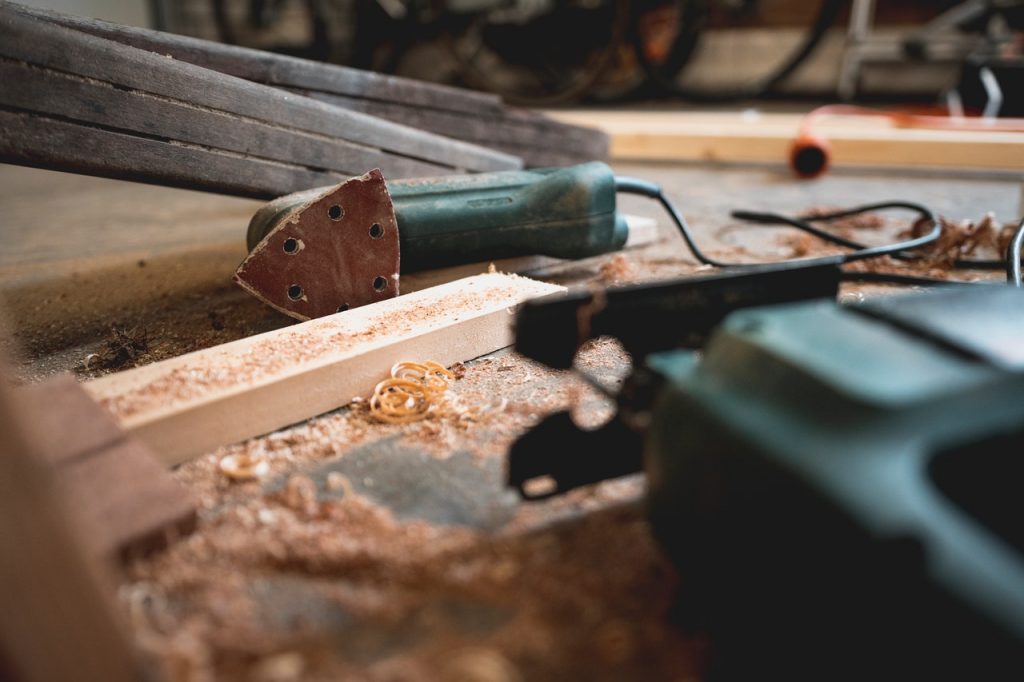When it comes to giving a perfect finish between the wall and the floor, trims are the best option to make any room refined.
However, without a miter saw, any craftsman can have doubts about their ability how to cut baseboards.
With our step-by-step guide, you will be able to cut baseboard corners without a miter saw without any hassle.
Quick Summary
In this article we will learn the following things:
- How to cut trim without using a miter saw
- The different cuts and joints made with trim or baseboard
So, without further ado, let’s begin.
The Different Types of Saws to Use
Although a miter saw is the first tool of preference for many craftsmen, it is not an absolute necessity for woodworking. With an experienced hand or a reliable guide, you can make accurate cuts at any degree angle with other saws as well.
Some of the most common saws to use instead of a miter saw are:
Circular Saw
The circular saw is often compact and great for making quick and accurate cuts. You can easily cut at different angled by adjusting the bracket of the saw or angling it yourself.
The sturdy machine gives you control over the movements of the blade and cordless versions are great for beginner craftsmen.
Hand Saw
A hand saw is handy for making reliable cuts in a few motions. Hand saws give you good control over the movement of the blade and allow you to control how fast the cutting occurs.
Hand saws are great for small-scale work that doesn’t need to be rushed for time. If you can’t afford a mechanical saw, hand saws give you the perfect straight cut as well.
Miter Box
A miter box is a saw with all the important angles predesigned in templates that the user can easily use without having to measure.
These angles include the 45 degree, 60 degree, and 90-degree angles.
Miter boxes are very similar to functioning as a hand saw, the only difference being a lack of time spent on measuring angled and cuts.
Table Saw
A table saw is a type of circular saw where the blade is stationary and the craftsman angles the trim according to the length and cut desired.
They are very handy for working with long pieces of trim and baseboard.
If you find using a stable workspace an important aspect of woodworking, a table saw will work well for you to cut wood with.

Types of Joints and Corners
When it comes to trimming and molding, there are many different cuts and joints that need to be made. This is because the trimming has to attach to other pieces and extend to make corners as well.
Knowing the different cuts and joints helps you use the right tools and methods to work with trim or baseboard.
Butt Joint
A butt joint is the simplest of joints to take. Simply take two cuts of the board and join them together in a uniform manner. You can use it to widen boards or make frames.
Miter Joint
A miter joint has a 90-degree corner. It can be made by joining two beveled cut pieces of the board at 45 degrees angles. It can be used to make corner angles or hold carcasses.
Scarf Joint
A scarf joint is a horizontal joint. You need to have two tapered cuts of baseboard which you join at the tapered ends to make this joint.
Coped Joint
A coped joint is made by joining one butt end of a piece of board, with another piece whose joining end is made specifically for them to fit.
Cutting Inside and Outside Baseboard Corners
Some of the most difficult cuts made by trims are inside and outside corners. These are essential for a carefully installed trim that runs along the edges of any room.
Good corners lie right next to the surface of the walls and can be made using coped joints or a carpenter’s square.
Looking for more resource guides? We’ve got them right HERE.
How to Cut Baseboard Corners Without a Saw?
Here are the detailed instructions on how to cut each trim in a straight line with alternative saws:
Using a Circular Saw
For cutting trim with a circular saw, we generally assume that the corners have already been cut and installed.
Use the following method to cut straight lines on the baseboard:
- Drill four nail holes in the corner block trim on each side of the baseboard. Put two holes on top and two at the bottom.
- Place the block in one corner of the room and use a hammer to drive the nails or screws through the trim.
- Create corner trims for every corner of the room and install them in a similar fashion.
- Measure the length of trim needed in between these corners and mark them on a length of baseboard with a pencil.
- Make sure to leave 7 inches from the tips to ensure you are cutting from the best piece of trim.
- Turn on the laser sight and cut straight across from each point to have a clean cut on your trim that you can install onto the wall.
Using a Hand Saw
A hand saw is a trusted tool for many woodworkers. The control of the cut and precision offered is something many appreciate. Therefore, cutting trim with one is an easy task for someone who is used to it.
To cut baseboard using a hand saw, go through the following steps:
- Using lumber, cut two 12 inch lengths of 1X6 and 1×4 respectively. Using glue and wood screws, make a 4-inch open box with the four pieces of lumber.
- Using a bevel set at 45 degrees, mark the side angles of the box and cut through diagonally. Make sure your hand saw is aligned with the angles of the box.
- This will act as a kerf or guide for the actual cut you have to make on the baseboard. Hence place the baseboard on top of the box.
- Using the hand saw, cut through the baseboard to the kerf to ensure a clean and precise cut at the required angles.
- Clean off the edges before attaching the cut piece to the wall or other pieces of baseboard to make joints.
Using a Table Saw
One of the most common tools for cutting trimming is a table saw. Remember to prep your table surface before you begin any project.
To use your table saw to cut trim, follow these steps:
- Adjust the height of your table saw’s blade so it’s only a saw tooth higher than the trim you have used.
- Set the desired angle, preferably 45 degrees, and lock the level at the front of your table saw.
- Mark the baseboard in the areas that you want to cut it, this will act as a guide when you are making the final cut.
- Make sure to leave the length of the baseboard enough that the cut pieces align perfectly. Making the wrong measurement could ruin everything.
- Depending on which way you want to cut the angle on your baseboard, position it facing up for right and down for left.
- Feed the baseboard into the cutting blade with a firm grip. Once the board is cut through you can smoothen the edges.
The Main Takeaway
Now that you know how to cut trim without a miter saw, you can finish any project regardless of the circumstances.
Make sure to pick an alternative saw that you are comfortable using and saw straight lines with.
Always wear protective gear to ensure your safety and never leave your tools unguarded.
CLICK HERE, for tool reviews and more.

